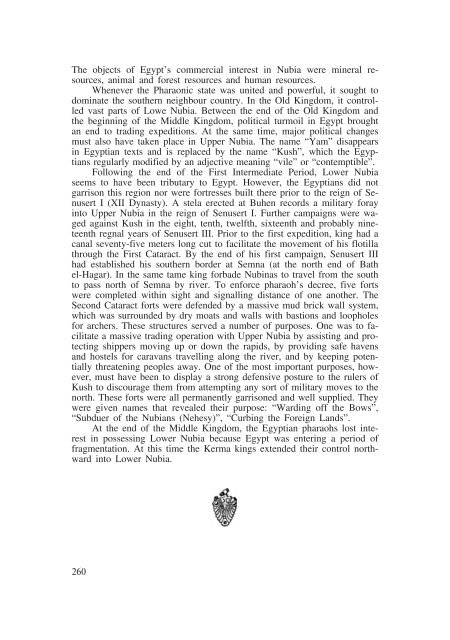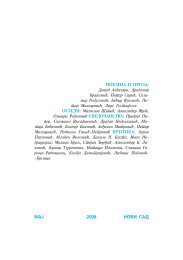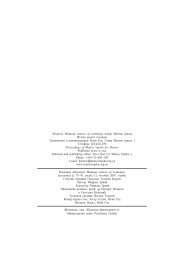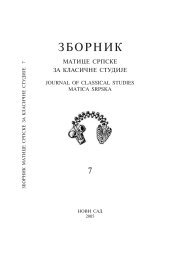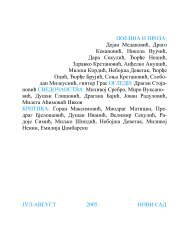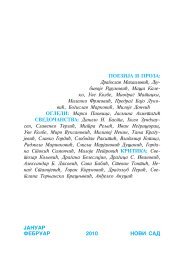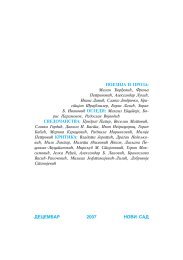Create successful ePaper yourself
Turn your PDF publications into a flip-book with our unique Google optimized e-Paper software.
The objects of Egypt's commercial interest in Nubia were mineral resources,<br />
animal and forest resources and human resources.<br />
Whenever the Pharaonic state was united and powerful, it sought to<br />
dominate the southern neighbour country. In the Old Kingdom, it controlled<br />
vast parts of Lowe Nubia. Between the end of the Old Kingdom and<br />
the beginning of the Middle Kingdom, political turmoil in Egypt brought<br />
an end to trading expeditions. At the same time, major political changes<br />
must also have taken place in Upper Nubia. The name “Yam" disappears<br />
in Egyptian texts and is replaced by the name “Kush", which the Egyptians<br />
regularly modified by an adjective meaning “vile" or “contemptible".<br />
Following the end of the First Intermediate Period, Lower Nubia<br />
seems to have been tributary to Egypt. However, the Egyptians did not<br />
garrison this region nor were fortresses built there prior to the reign of Senusert<br />
I (XII Dynasty). A stela erected at Buhen records a military foray<br />
into Upper Nubia in the reign of Senusert I. Further campaigns were waged<br />
against Kush in the eight, tenth, twelfth, sixteenth and probably nineteenth<br />
regnal years of Senusert III. Prior to the first expedition, king had a<br />
canal seventy-five meters long cut to facilitate the movement of his flotilla<br />
through the First Cataract. By the end of his first campaign, Senusert III<br />
had established his southern border at Semna (at the north end of Bath<br />
el-Hagar). In the same tame king forbade Nubinas to travel from the south<br />
to pass north of Semna by river. To enforce pharaoh's decree, five forts<br />
were completed within sight and signalling distance of one another. The<br />
Second Cataract forts were defended by a massive mud brick wall system,<br />
which was surrounded by dry moats and walls with bastions and loopholes<br />
for archers. These structures served a number of purposes. One was to facilitate<br />
a massive trading operation with Upper Nubia by assisting and protecting<br />
shippers moving up or down the rapids, by providing safe havens<br />
and hostels for caravans travelling along the river, and by keeping potentially<br />
threatening peoples away. One of the most important purposes, however,<br />
must have been to display a strong defensive posture to the rulers of<br />
Kush to discourage them from attempting any sort of military moves to the<br />
north. These forts were all permanently garrisoned and well supplied. They<br />
were given names that revealed their purpose: “Warding off the Bows",<br />
“Subduer of the Nubians (Nehesy)", “Curbing the Foreign Lands".<br />
At the end of the Middle Kingdom, the Egyptian pharaohs lost interest<br />
in possessing Lower Nubia because Egypt was entering a period of<br />
fragmentation. At this time the Kerma kings extended their control northward<br />
into Lower Nubia.<br />
260


